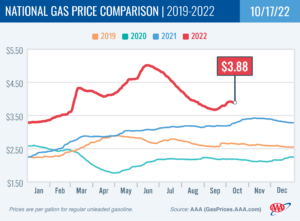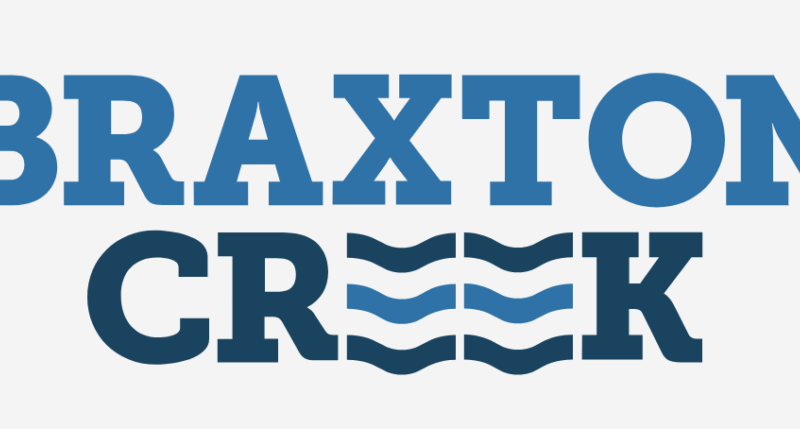Gas Demand Falls as Recession Fears Suppress Oil Prices
Lower gasoline demand, amid increasing supply and fluctuating oil prices, has contributed to the national average moving downward. If demand continues to drop coupled with a slide in oil prices, drivers could see increases in prices at the pump start to slow and even come down through the week.
The national average pump price for a gallon of gas decreased three cents over the past week to hit $3.88. Today’s national average of $3.88 is 20 cents higher than a month ago and 56 cents more than a year ago.

Quick Stats
The nation’s top 10 largest weekly decreases: California (−28 cents), Wisconsin (−23 cents), Oregon (−19 cents), Nevada (−18 cents), Michigan (−16 cents), Washington (−14 cents), Alaska (−12 cents), Indiana (−12 cents), Ohio (−12 cents) and Arizona (−10 cents).
The nation’s top 10 least expensive markets: Georgia ($3.25), Texas ($3.30), Mississippi ($3.33), South Carolina ($3.37), Arkansas ($3.38), Tennessee ($3.38), Louisiana ($3.40), Florida ($3.40), Alabama ($3.43) and Missouri ($3.46).
Oil Market Dynamics
At the close of Friday’s formal trading session, WTI decreased by $3.50 to settle at $85.61. Crude prices decreased last week as global economic fears pulled crude prices lower. For this week, crude prices could continue to weaken as interest rates rise globally, which could lead to a recession. If a recession occurs, crude prices would likely reduce alongside demand. Additionally, EIA’s latest weekly report showed that total commercial crude inventories increased by 9.9 million bbl to 439.1 million bbl.
Drivers can find current gas prices along their route using the AAA TripTik Travel planner.
Source: https://rvbusiness.com/gas-demand-falls-as-recession-fears-suppress-oil-prices/






